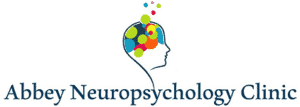Dysgraphia brain training typically involves exercises to improve fine motor skills, spatial awareness, and writing abilities. Techniques may include repetitive writing exercises, using different writing tools and surfaces, and practicing letter formation and spacing. Cognitive training may focus on attention, working memory, and processing speed to enhance overall writing proficiency. Therapy often integrates multisensory approaches to accommodate different learning styles. Personalized strategies aim to build confidence and proficiency in written communication, tailored to individual needs and challenges associated with dysgraphia.
Understanding Dysgraphia
Dysgraphia involves recognizing it as a specific learning disability that affects writing skills. Individuals with dysgraphia may struggle with various aspects of writing, including handwriting legibility, spelling, and organizing thoughts coherently on paper. This condition is not related to intelligence but rather to difficulties in motor coordination, spatial planning, and processing information related to writing tasks.
Diagnosis typically involves assessments by educational psychologists or specialists who identify the specific challenges a person faces. Effective understanding of dysgraphia is crucial for implementing appropriate accommodations and interventions that can support individuals in overcoming obstacles and achieving their full potential in academic, professional, and personal writing tasks.
Effective Strategies
Research-backed strategies such as breaking down writing tasks into smaller steps, using graphic organizers, and employing assistive technology like speech-to-text software can significantly improve writing outcomes for individuals with dysgraphia. These strategies aim to bypass or support the areas of weakness associated with dysgraphia, allowing for more fluent and coherent expression.
Use of Assistive Technology
Assistive technology plays a pivotal role in supporting individuals with dysgraphia by providing alternative means of written expression. Speech-to-text software allows users to dictate their thoughts verbally, which is then converted into text on a computer or mobile device. This technology bypasses handwriting difficulties and enables individuals to focus on generating ideas and organizing their thoughts without the barrier of physical writing. Word prediction programs suggest words as users type, aiding in spelling accuracy and enhancing writing fluency.
Multisensory Learning Techniques
Dysgraphia often involves challenges with motor coordination and sensory processing, making multisensory learning techniques particularly effective. These techniques engage multiple senses simultaneously to reinforce learning and memory. For example, using sandpaper letters allows individuals to feel the shape and texture of letters while learning their formation. Auditory cues, such as saying words aloud while writing or listening to spelling patterns, can improve phonological awareness and spelling accuracy. Visual aids, such as color-coded diagrams or graphic organizers, help in structuring thoughts and enhancing comprehension.
Explicit Instruction in Writing Skills
Explicit instruction involves systematically teaching specific writing skills through structured lessons and guided practice. For individuals with dysgraphia, this approach breaks down complex writing tasks into manageable steps, focusing on areas such as letter formation, sentence construction, and paragraph organization. Teachers provide clear explanations, demonstrate writing techniques, and offer scaffolded support to build proficiency and confidence.
Graphomotor Exercises
Graphomotor exercises are designed to improve fine motor skills and handwriting fluency, addressing one of the core challenges faced by individuals with dysgraphia. These exercises may include finger strengthening activities, such as squeezing putty or using stress balls, to enhance grip strength and dexterity. Tracing letters and shapes on paper or using a touchscreen device can help improve motor control and letter formation accuracy. Adaptive writing tools, such as pencil grips or slant boards, provide ergonomic support and promote proper hand positioning during writing tasks.
Environmental Modifications
Creating a supportive writing environment involves making physical and environmental adjustments to accommodate the needs of individuals with dysgraphia. Ergonomic seating with proper back support and adjustable desks ensures comfort and promotes good posture during writing tasks, reducing physical strain and fatigue. Adequate lighting and noise reduction measures minimize distractions and enhance focus during writing activities. Providing adaptive tools and materials, such as raised-line paper, wide-ruled paper, or specialized pens and pencils, accommodates specific handwriting needs and enhances accessibility.
Neuroplasticity and Learning
Neuroplasticity refers to the brain’s ability to reorganize itself by forming new neural connections throughout life. In the context of learning, understanding neuroplasticity is crucial as it highlights the brain’s capacity to adapt and change in response to experiences, including educational interventions.
By engaging in targeted learning activities, individuals can strengthen neural pathways associated with specific skills, such as language acquisition or motor tasks affected by conditions like dysgraphia. This concept underscores the potential for improvement and skill development, emphasizing the importance of consistent practice and structured interventions to harness neuroplasticity effectively in enhancing learning outcomes.
Technology Tools
Advances in technology have revolutionized support for dysgraphia, offering a range of tools tailored to enhance writing skills. Word prediction software anticipates words as users type, aiding in spelling accuracy and fluency. Digital note-taking apps enable organizing and retrieving information efficiently, bypassing challenges with handwriting.
Adaptive devices like ergonomic keyboards or styluses cater to comfort and motor skill needs, facilitating smoother and more legible writing. Integrating these tools into daily routines empowers individuals with dysgraphia to overcome barriers associated with traditional writing methods, fostering independence and improving overall writing proficiency through accessible and supportive technology solutions.
Multisensory Approaches
Multisensory approaches in dysgraphia intervention leverage multiple sensory modalities visual, auditory, and tactile to enhance learning and skill development. For instance, using tactile methods like tracing letters on textured surfaces helps improve letter formation and motor skills. Auditory cues, such as reading aloud while writing, aid in phonological awareness and spelling accuracy.
Visual aids like color-coded diagrams or graphic organizers assist in organizing thoughts and improving comprehension. By engaging multiple senses simultaneously, multisensory approaches cater to diverse learning styles and reinforce neural pathways involved in writing. These methods not only enhance retention and understanding but also promote confidence and competence in writing tasks among individuals with dysgraphia.
Cognitive Exercises
Targeted cognitive exercises focus on improving specific cognitive functions related to writing, such as working memory, sequencing, and fine motor control. Activities may include tracing exercises to improve handwriting fluency, memory games to strengthen recall of spelling patterns, or motor coordination exercises to refine letter formation. These exercises are designed to build foundational skills essential for proficient writing.
- Working Memory Activities: Engage in activities that challenge and improve working memory, such as remembering and writing down sequences of numbers or words.
- Sequencing Tasks: Practice tasks that require sequencing steps or events, such as writing out the steps to complete a simple task like making a sandwich or following a set of instructions in order.
- Visual-Spatial Puzzles: Solve visual-spatial puzzles like jigsaw puzzles or spatial reasoning games to enhance skills related to spatial planning and organization, which are important for writing.
- Attention and Focus Exercises: Practice exercises that improve attention and focus, such as focusing on a writing task for increasing lengths of time or completing worksheets that require sustained attention to detail.
- Fine Motor Control Activities: Engage in activities that develop fine motor skills needed for handwriting, such as drawing intricate patterns, threading beads, or using tweezers to pick up small objects.
Personalized Learning Plans
Personalized learning plans for individuals with dysgraphia are crucial for addressing their specific needs and enhancing writing skills. These plans begin with a comprehensive assessment to identify strengths, weaknesses, and learning styles. Based on this evaluation, specific goals are set to target areas of improvement, such as handwriting legibility or spelling accuracy.
Preferred learning strategies, whether visual, auditory, or tactile, are incorporated to maximize effectiveness. Regular progress monitoring allows for adjustments in instructional methods and goals as individuals develop their writing abilities. By tailoring interventions to individual profiles, personalized learning plans empower individuals with dysgraphia to achieve meaningful and sustainable improvements in their writing skills.
Conclusion
Dysgraphia Brain Training at Abbey Neuro Psychology Clinic offers personalized strategies tailored to address the unique challenges of dysgraphia. By harnessing advances in technology, employing multisensory approaches, engaging in targeted cognitive exercises, and implementing personalized learning plans, individuals can overcome barriers and enhance their writing abilities. These interventions, designed to foster neuroplasticity and support cognitive development, empower individuals with dysgraphia to achieve greater proficiency and confidence in written communication. For more information or to schedule a consultation, contact Abbey Neuro Psychology Clinic at 650-590-5743 or visit us at 366 S. California Avenue, Suite 14, Palo Alto, CA 94306.






